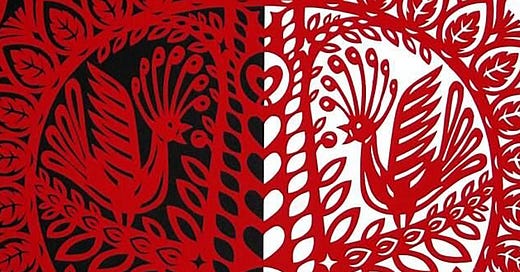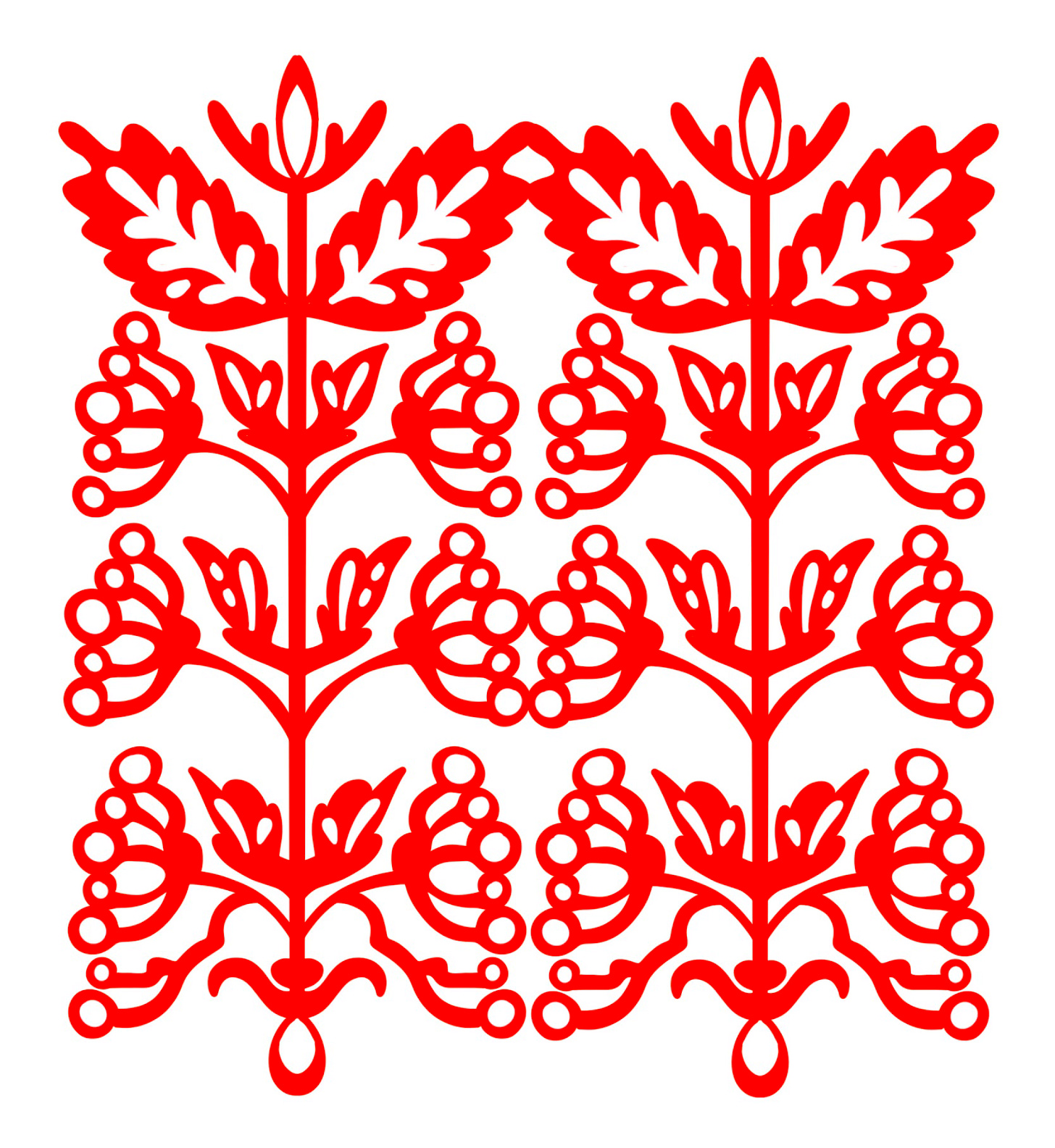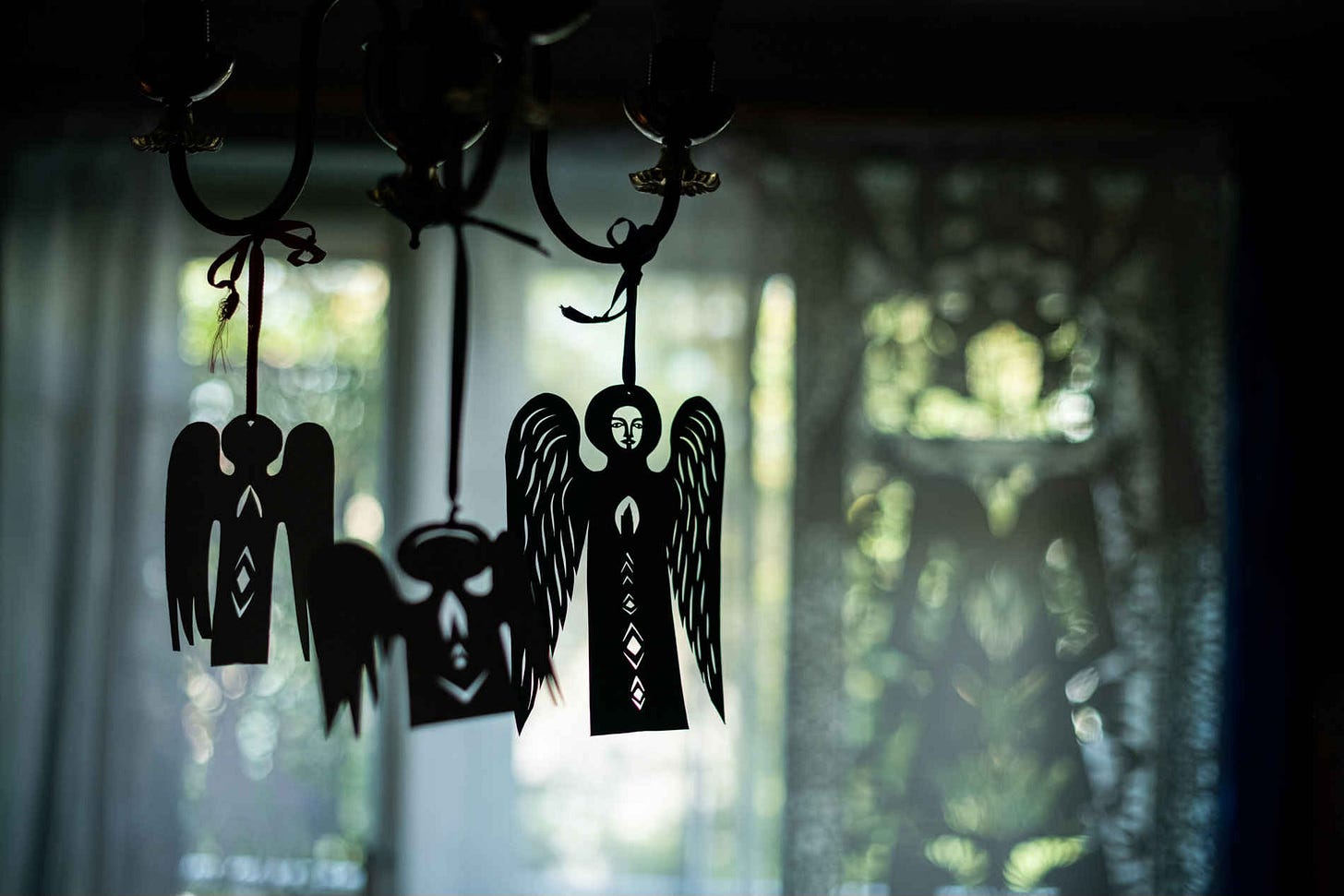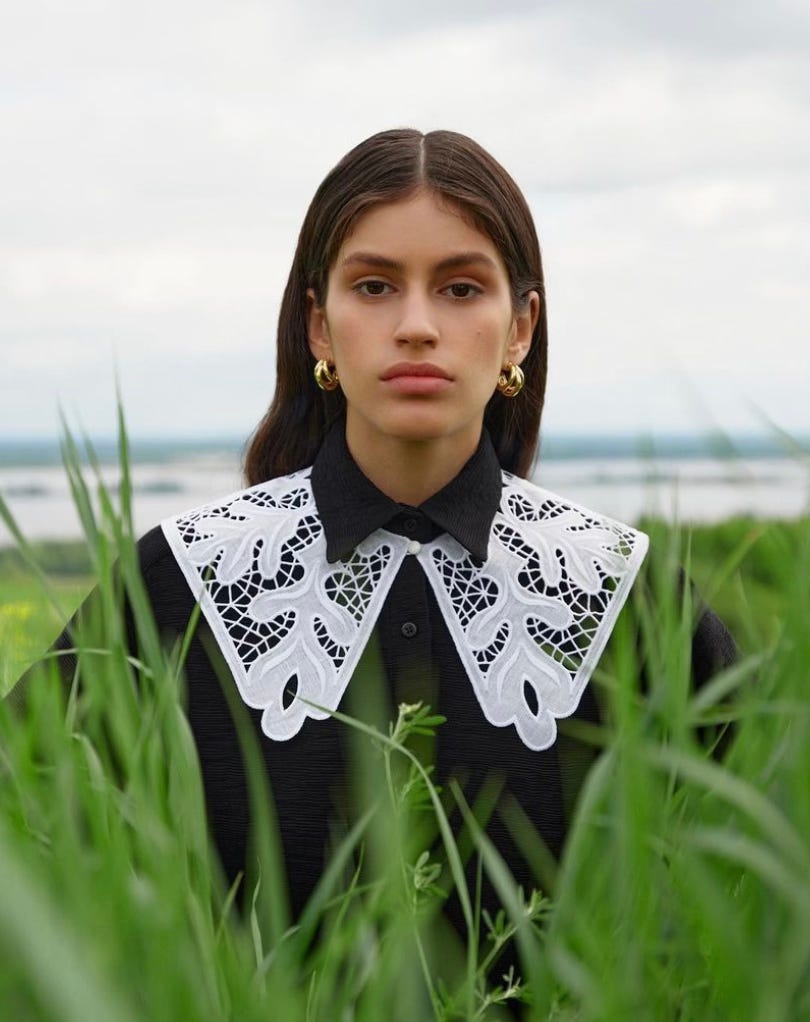Paper is alive.
A child of wood, it breathes in and out, absorbing the life that surrounds its fibrous body.
Between the 7th to 12th centuries, China introduced paper crafts to Ukraine and other Slavic regions. Delicate yet ephemeral, this material captured the imaginations of craftspeople, resulting in the birth of a unique decorative technique of paper cutting.
Researchers consider the prototype to this artform to be a ‘kustodya’, a small slip of white paper with lace outskirts that was used as backing and decoration for official stamps in the mid 16th century.
Derived from the verb ‘vytynaty’, meaning to ‘cut out’, the art of vytynanka, or paper cutting, first appeared in rural Ukrainian villages in the middle of the 19th century. A form of decoration, traditional vytynanky were made with geometric or floral patterns, though some also carried stories and characters such as animals, people, or folkloric beasts. A cheap and easy way to decorate the home, vytynanky lived on windows, walls, stove ledges, shelves, and furniture.
They were found all over Ukraine, but varied from region to region. In Poliddia, vytynanky were used as wallpaper, carpets, or curtains. In the Carpathians, people used them to decorate the walls around windows and tie beams (ceiling support structures).
In any case, vytynanky told stories of village life: births, weddings, or celebrations. It was common to spot paper angels during Christmas, or delicate crosses hung during the Easter season.
With the industrial fabrics and colours of the 1960’s, vytynanky decreased in popularity, and were only brought out occassionally as seasonal decoration.
By 2008, it was considered a dying art form. The fragility of paper makes for challenging preservation, and turbulent historical events made this task that much more difficult.
Recently however, vytynanky began to see a revival through the creativity of contemporary artists and designers.
Dariya Alyoshkina, a craftswoman from Lviv, has found a new way to draw attention to this craft through creating modern vytynanky for interiors, public institutions, and book covers.
Having recently exhibited in the US, Germany, Poland, France, and South Korea (to name a few), Dariya expanded this creative art form across borders, inviting conversation around the striking Ukainian identity that the vytynanky carry. Ubiquitous in nature, yet specific in use, paper has a way of bringing cultures together.
Olena Turyanska’s contempoary re-imagining of the vytynanka leaves the viewer with intricate microcosms of line, akin to organisms and biological systems.
Through paper, harmony and symmetry are achieved in parallel, like a webbed universe. The shadows that these works create move them into a three-dimensional plane that delicately invites the space around them.
In the fashion world, a Ukrainian-French collaboration of designers combined modern art and traditional craft to create stunning accessories. Custom vytyvanky designs are translated into thread to create opulent jewelry and lacy collars.
In every interpretation of the vytynanky craft, contemporary creatives learned to empower the intricate nature of paper, and to work with the unpredictability of the medium. Once a plan, now a suggestion, once abstract, now coming into focus.
Paper’s delicate nature never stopped this medium from powerfully making space for the whimsical expression of Ukrainian culture. Complex, diverse, and connected, the vytynanka lives on to represent the unique resilience of creative expression.
What I’m making -
No longer in studio, and with the house all scrambled from packing, it’s fair to say I am not in a creative mood.
However, this leaves time for casual research, much of which is conducted through obscure archives on the internet. This photocopy was found in a hobbyist ethnographer’s digital archive collection. The shape of the hay mound in relation to the workers is comically large but visually very appealing. Something in the back pocket for later?
What I’m sitting with -
“Each work of art, of whatever kind, must always contain a new element, and be a living addition to the world of art… Tradition was to inspire invention, but invention was also made to keep tradition alive.”
Karl Friedrich Schinkels
Thanks so much for reading, and I hope you were able to learn something new about this fascinating art form. Feel free to support the artists mentioned, and to make their communities just that little bit brigther.
A reminder that our monthly embroidery pattern is coming out today! If you’d like to join in and recieve the downloadable file, consider becoming a paid subscriber to keep this newsletter going :)
Much love and talk soon,
Sasha











Thank you for reminding us about this ancient craft. I like the idea of using this technique to make Christmas decorations. Something new to try :)